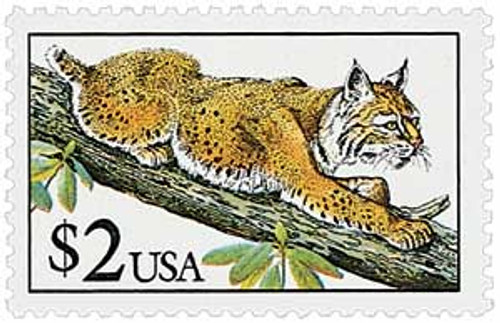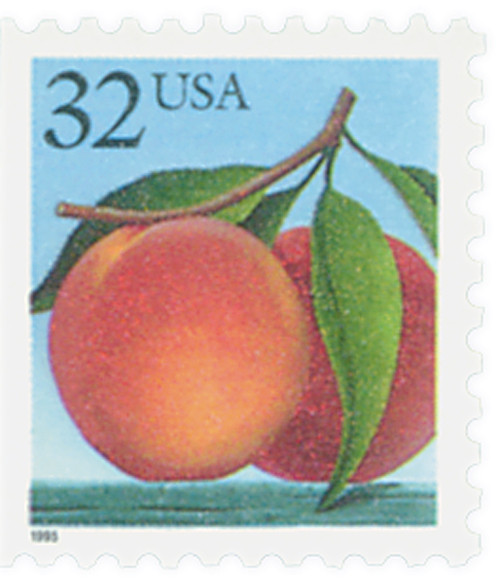
# 2486 - 1993 29c African Violet
US #2486
1993 African Violet
- Sold in booklets of 10 or 20 stamps
- Seventh stamp issued in 1993 with flower design
Stamp Category: Definitive
Value: 29¢, First Class mail rate
First Day of Issue: October 8, 1993
First Day City: Beaumont, Texas
Quantity Issued: 1,450,000,000
Printed by: Sennett Enterprises for KCS Industries
Printing Method: Photogravure
Format: 1 Pane of 10 or 2 Panes of 10 from printing cylinders of 400
Perforations: 10 x 11
Why the stamp was issued: This stamp was issued to replace the Wood Duck booklet stamps issued in 1991. It was issued in booklets of 10 containing one pane of stamps and booklets of 20 containing two panes.
About the stamp design: The design for the African Violet stamp was revealed at the African Violet Society of America’s annual convention in April 1993. Ned Seidler was the artist behind the stamp. He also created the designs for the Garden Flowers booklet stamps (US #2760-64). The artwork showing African Violets was done with watercolors and gouache (opaque watercolors).
First Day City: The First Day of Issue ceremony took place during the executive board meeting of the African Violet Society of America, held in Baumont, Texas.
Unusual fact about this stamp : This stamp was found on an envelope with a postmark of September 7, more than a month before its official release date.
History the stamp represents: The Saintpaulia, better known as the African violet, is not really a violet at all, although its deep purple blossoms resemble those of a violet. First discovered in the hilly regions of tropical East Africa by Baron Walter von Saint Paul, the African violet has become a popular house plant in many countries around the world.
The Imperial District Captain of Usambara (a province of northeast Tanganyika, East Africa), Saint Paul came across this pretty little plant while exploring the outer boundaries of his plantations. He immediately sent home plants of “das violette Usambara” to his father in Germany.
It was Herman Wendland, the Director of the Royal Botanical Garden at Herrenhausen, Germany that named the plant for the Saint Paul family, described it in Latin, and gave it the species name ionantha, which means “with violet-like flowers.”
Displayed in Ghent at the International Horticultural Exhibit, the African violet was “one of the most botanically interesting plants at the exhibition.” Friedrich Benary, the first commercial gardener to see the possibilities of cultivating this popular plant, began seed production and distribution in 1893. Today there are hundreds of varieties whose blooms come in a wide range of colors, including purple, blue, pink, and white.
US #2486
1993 African Violet
- Sold in booklets of 10 or 20 stamps
- Seventh stamp issued in 1993 with flower design
Stamp Category: Definitive
Value: 29¢, First Class mail rate
First Day of Issue: October 8, 1993
First Day City: Beaumont, Texas
Quantity Issued: 1,450,000,000
Printed by: Sennett Enterprises for KCS Industries
Printing Method: Photogravure
Format: 1 Pane of 10 or 2 Panes of 10 from printing cylinders of 400
Perforations: 10 x 11
Why the stamp was issued: This stamp was issued to replace the Wood Duck booklet stamps issued in 1991. It was issued in booklets of 10 containing one pane of stamps and booklets of 20 containing two panes.
About the stamp design: The design for the African Violet stamp was revealed at the African Violet Society of America’s annual convention in April 1993. Ned Seidler was the artist behind the stamp. He also created the designs for the Garden Flowers booklet stamps (US #2760-64). The artwork showing African Violets was done with watercolors and gouache (opaque watercolors).
First Day City: The First Day of Issue ceremony took place during the executive board meeting of the African Violet Society of America, held in Baumont, Texas.
Unusual fact about this stamp : This stamp was found on an envelope with a postmark of September 7, more than a month before its official release date.
History the stamp represents: The Saintpaulia, better known as the African violet, is not really a violet at all, although its deep purple blossoms resemble those of a violet. First discovered in the hilly regions of tropical East Africa by Baron Walter von Saint Paul, the African violet has become a popular house plant in many countries around the world.
The Imperial District Captain of Usambara (a province of northeast Tanganyika, East Africa), Saint Paul came across this pretty little plant while exploring the outer boundaries of his plantations. He immediately sent home plants of “das violette Usambara” to his father in Germany.
It was Herman Wendland, the Director of the Royal Botanical Garden at Herrenhausen, Germany that named the plant for the Saint Paul family, described it in Latin, and gave it the species name ionantha, which means “with violet-like flowers.”
Displayed in Ghent at the International Horticultural Exhibit, the African violet was “one of the most botanically interesting plants at the exhibition.” Friedrich Benary, the first commercial gardener to see the possibilities of cultivating this popular plant, began seed production and distribution in 1893. Today there are hundreds of varieties whose blooms come in a wide range of colors, including purple, blue, pink, and white.


















